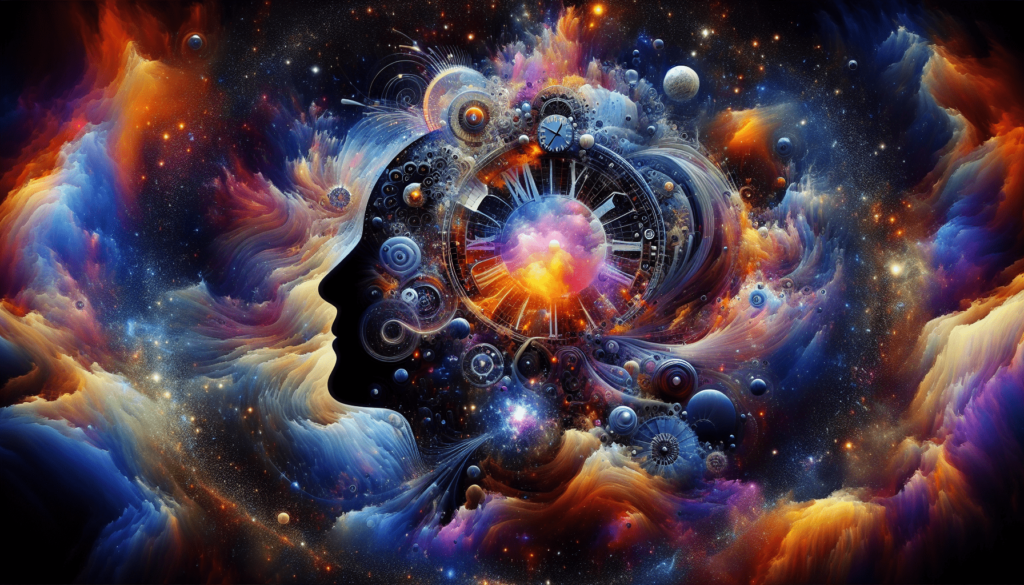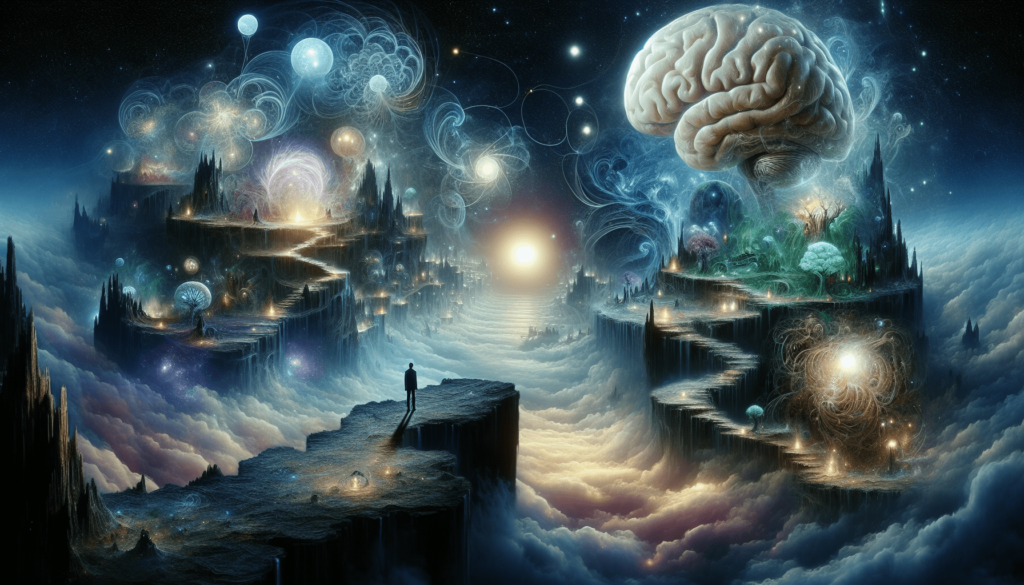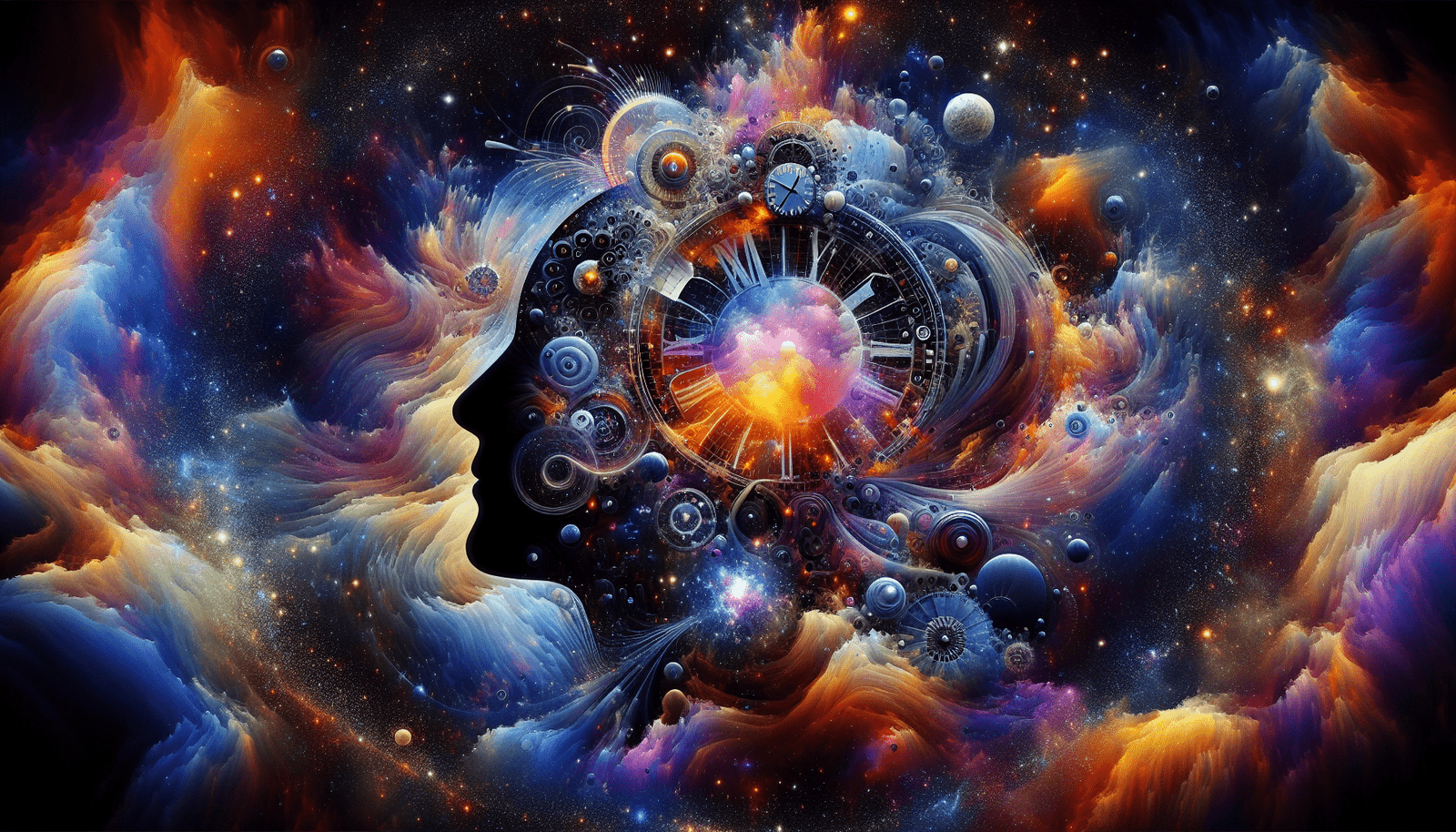Have you ever found yourself waking up from a vivid dream, wondering what it all meant? Dreams have intrigued humans for centuries, as we try to decipher the messages hidden within our minds while we sleep. In this article, we will explore the fascinating world of dreams, unraveling the reasons why we dream and uncovering the potential meanings behind them. So, buckle up and get ready to embark on a journey through the mysterious realm of dreams.

The Nature of Dreams
Dreams have fascinated and perplexed humans for centuries. They are a complex and enigmatic phenomenon that occurs during sleep. But what exactly are dreams?
Definition of Dreams
Dreams can be defined as a succession of mental images, emotions, and sensations that occur involuntarily in the mind during certain stages of sleep. They are often accompanied by a sense of realism and can range from mundane to fantastical experiences.
Types of Dreams
There are various types of dreams that individuals may experience. Most commonly, we can classify dreams into two categories: vivid dreams and recurring dreams.
Vivid dreams are characterized by their clarity and intensity. They often feel more lifelike and are easier to remember upon waking. On the other hand, recurring dreams are those that repeat themselves over time, often exploring similar themes or situations.
Common Dream Themes
Dreams can cover a wide range of themes that reflect our waking life experiences, worries, and desires. Some common dream themes include:
-
Falling: This dream theme is often associated with a loss of control or fear of failure.
-
Flying: Dreams of flying are often linked to feelings of liberation, freedom, and empowerment.
-
Being chased: This dream theme can indicate a sense of being pursued or a desire to escape from a difficult situation.
-
Teeth falling out: This dream theme is believed to represent concerns about appearance, communication, or self-image.
-
Being naked in public: This dream theme often represents vulnerability or a fear of being exposed.
Theories on Dream Formation
Throughout history, different theories have emerged to explain the formation of dreams. Here are three prominent theories on dream formation:
Psychodynamic Theory
Sigmund Freud, the father of psychoanalysis, proposed the psychodynamic theory of dreams. According to Freud, dreams are a reflection of our unconscious desires, conflicts, and repressed memories. Dreams serve as a way to fulfill these unconscious wishes in a disguised form.
Activation-Synthesis Theory
The activation-synthesis theory, proposed by Allan Hobson and Robert McCarley, suggests that dreams are a result of random brain activity during sleep. This theory argues that dreams are our brain’s attempt to make sense of these random neural firings by creating a narrative.
Cognitive Theory
The cognitive theory of dreams focuses on the idea that dreams serve a broader purpose in the cognitive processing of information. This theory suggests that dreams help consolidate and organize memories, facilitate problem-solving, and promote learning.
The Function of Dreams
Despite the diverse theories on dream formation, researchers agree that dreams serve important functions for the mind and body. Here are three significant functions of dreams:
Processing Emotions and Memories
Dreams provide a unique opportunity for the brain to process and integrate emotions and memories accumulated throughout the day. During REM sleep, the emotional centers of the brain are highly active, allowing for the resolution of emotional conflicts and the consolidation of memories.
Problem-Solving and Creativity
Dreams have been known to aid in problem-solving and creative thinking. Several noteworthy inventions and solutions to complex problems have been attributed to insights gained through dreams. By exploring different scenarios and possibilities, dreams can unlock new perspectives and inspire innovative ideas.
Psychological Development and Self-Discovery
Dreams can also contribute to psychological development and self-discovery. They may provide insights into one’s personality, desires, and fears. By analyzing dream imagery and symbols, individuals can gain a deeper understanding of their subconscious mind and work towards personal growth and self-improvement.

The Importance of REM Sleep
Rapid Eye Movement (REM) sleep plays a crucial role in the occurrence of dreams. Understanding the relationship between REM sleep and dreaming can provide insights into the significance of dreams.
Overview of REM Sleep
REM sleep is one of the distinct stages of the sleep cycle. It is characterized by rapid eye movements, heightened brain activity, and muscle paralysis. REM sleep typically occurs multiple times throughout the night, with the duration of each REM period increasing as the night progresses.
Relationship Between REM Sleep and Dreaming
Research has shown that the majority of vivid and memorable dreams occur during REM sleep. The brain’s activity during this stage resembles that of wakefulness, with vivid imagery, emotions, and storylines being experienced in the dream state.
Role of REM Sleep in Memory Consolidation
REM sleep is closely associated with memory consolidation and learning. Studies have demonstrated that REM sleep enhances the retention and integration of newly acquired information. It is during this stage that the brain consolidates and organizes memories, contributing to overall cognitive functioning.
Psychological Interpretations of Dreams
Psychologists and scholars have devised various theories and interpretations of dreams, shedding light on their psychological significance. Two notable figures in dream analysis are Sigmund Freud and Carl Jung.
Sigmund Freud’s Psychoanalytic Interpretation
Freud proposed that dreams were a window into the unconscious mind, allowing individuals to gain insight into their desires, fears, and unresolved conflicts. He believed that dream content was symbolic and represented disguised expressions of repressed wishes and childhood experiences.
Carl Jung’s Collective Unconscious
Jung expanded upon Freud’s ideas and introduced the concept of the collective unconscious. He suggested that dreams contained archetypal symbols and themes that were shared across cultures and reflected universal human experiences. Jung believed that dreams had a transformative potential and served as a path to individuation and self-realization.
Modern Approaches to Dream Analysis
Contemporary approaches to dream analysis combine elements of both Freudian and Jungian theories while incorporating cognitive and neuroscientific perspectives. These approaches emphasize the role of personal experiences, cultural influences, and cognitive processes in shaping dream content and its interpretation.
Cultural and Symbolic Interpretations of Dreams
Dreams hold great cultural significance and are viewed differently across various societies and time periods. Additionally, dreams often contain symbolic meanings that can be interpreted in a culturally specific context.
Historical Significance of Dreams in Different Cultures
Dreams have been regarded as sacred and prophetic in many ancient civilizations. For example, in ancient Egypt, dreams were considered direct messages from the gods and were often used for guidance in important matters. Native American tribes also placed great importance on dreams, viewing them as a means of communication with spirits and ancestors.
Symbolic Meanings of Common Dream Themes
Beyond cultural interpretations, common dream themes often carry symbolic meanings that can provide insight into an individual’s subconscious experiences. For instance, water in dreams may symbolize emotions, while stairs can signify personal growth or change. Understanding these symbolic associations can aid in the interpretation of dream content.
The Relationship Between Dreams and Waking Life
Dreams and waking life are deeply interconnected, and they often influence and reflect each other in various ways.
Dreams as Reflections of Daily Experiences
Dreams often incorporate elements from our daily experiences, thoughts, and emotions. They can reflect our current concerns, relationships, and aspirations. By examining dream content, we can gain a deeper understanding of our waking life experiences and their impact on our subconscious mind.
Dreams as a Source of Inspiration
Throughout history, numerous artists, writers, and inventors have sought inspiration from their dreams. Dreams can present unique and creative ideas that may not be readily accessible during wakefulness. By paying attention to and valuing our dreams, we can tap into this wellspring of inspiration and enrich our creative endeavors.
Lucid Dreaming and Conscious Exploration
Lucid dreaming is a state of awareness within a dream, where the individual becomes conscious that they are dreaming. This state allows for greater control within the dream and offers opportunities for exploration and self-discovery. Lucid dreaming can be a tool for personal growth, as individuals can actively engage with their dream narratives and consciously shape their dream experiences.
Dreams and Emotional Well-being
Dreams play a vital role in emotional regulation and can significantly impact our overall well-being.
Emotional Regulation Through Dreaming
Dreams provide a space for emotional processing and regulation. They allow us to experience and express intense emotions that may be suppressed or unacknowledged in waking life. By working through these emotions in the realm of dreams, we can achieve emotional balance and alleviate emotional distress.
Nightmares and Their Psychological Impact
Nightmares are distressing dreams that evoke intense fear, anxiety, or sadness. They can disrupt sleep and have a lasting psychological impact, leading to increased levels of stress and anxiety. Addressing and understanding the underlying causes of nightmares can help alleviate their negative effects and promote emotional well-being.
Using Dreams for Personal Growth and Healing
Dreams can serve as a valuable tool for personal growth and healing. By exploring the symbolism and messages within our dreams, we can gain insights into our unconscious desires and fears. With the guidance of therapists or self-reflection, individuals can use dreams to address unresolved issues, promote self-awareness, and foster psychological healing.
Dreams and Sleep Disorders
While dreams are a natural part of the sleep cycle, certain sleep disorders can significantly impact dreaming experiences.
Sleep Disorders That Affect Dreaming
Sleep disorders such as insomnia, sleep apnea, and narcolepsy can disrupt the sleep cycle and alter dreaming patterns. Insomnia, for example, can lead to fragmented sleep and reduce the occurrence and recall of dreams. Understanding the relationship between sleep disorders and dreaming can aid in the diagnosis and treatment of these conditions.
Night Terrors and Sleepwalking
Night terrors and sleepwalking are parasomnias characterized by abnormal behaviors during sleep. While dreams often occur during REM sleep, these conditions typically occur during non-REM sleep stages. Night terrors and sleepwalking can disrupt normal dreaming processes and lead to distressing experiences for individuals affected by these sleep disorders.
Dream-Enacting Behavior in REM Sleep Disorder
REM sleep disorder is a condition in which individuals act out their dreams due to a loss of muscle paralysis during REM sleep. This disorder can cause physical harm to the individual or their sleeping partner. Understanding the relationship between dream content and dream-enacting behaviors can help identify and manage REM sleep disorder effectively.
Practical Strategies for Dream Exploration
For individuals interested in exploring their dreams further, several practical strategies can enhance the understanding and interpretation of dream experiences.
Keeping a Dream Journal
Keeping a dream journal involves recording dreams immediately upon waking. This practice helps improve dream recall and enables individuals to identify recurrent themes or symbols. By maintaining a record of dreams over time, patterns and connections may emerge, offering deeper insights into the personal meaning of dreams.
Interpreting Dream Symbols and Motifs
Dream symbols and motifs can hold significant personal meaning. Engaging in the interpretation of these symbols can provide insights into unconscious thoughts and emotions. Tools such as dream dictionaries or working with a professional dream analyst can aid in unraveling the messages and meanings contained within dream imagery.
Engaging in Dream Visualization and Analysis
Engaging in dream visualization and analysis techniques can further promote understanding and self-exploration. Visualizing dream scenes, interacting with dream characters, or engaging in active imagination can facilitate a deeper connection with dream content and enhance the potential for personal insight and growth.
In conclusion, dreams are a fascinating and multifaceted aspect of the human experience. They offer glimpses into our subconscious mind, provide opportunities for creativity and problem-solving, and contribute to emotional well-being and personal development. By exploring and valuing our dreams, we can unlock hidden aspects of ourselves and gain a deeper understanding of our waking lives.
